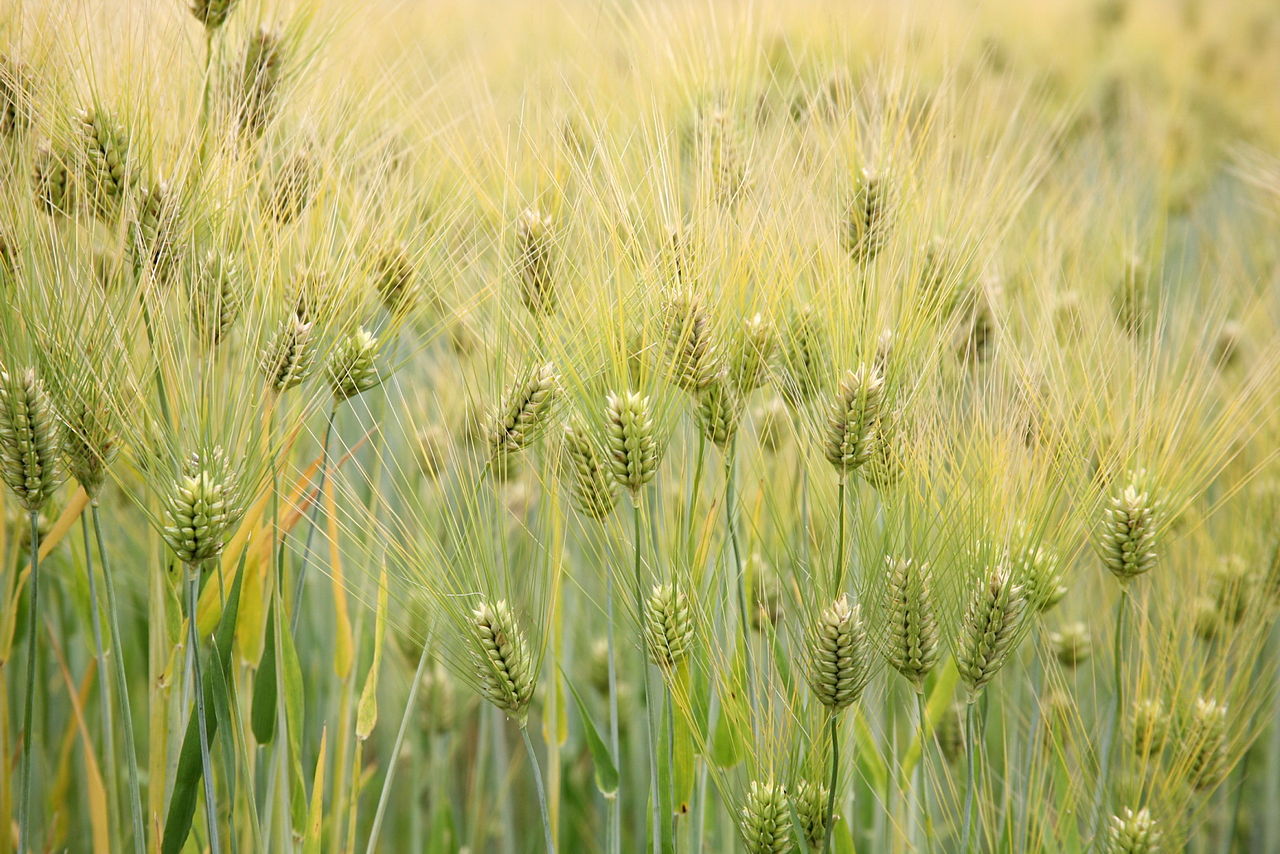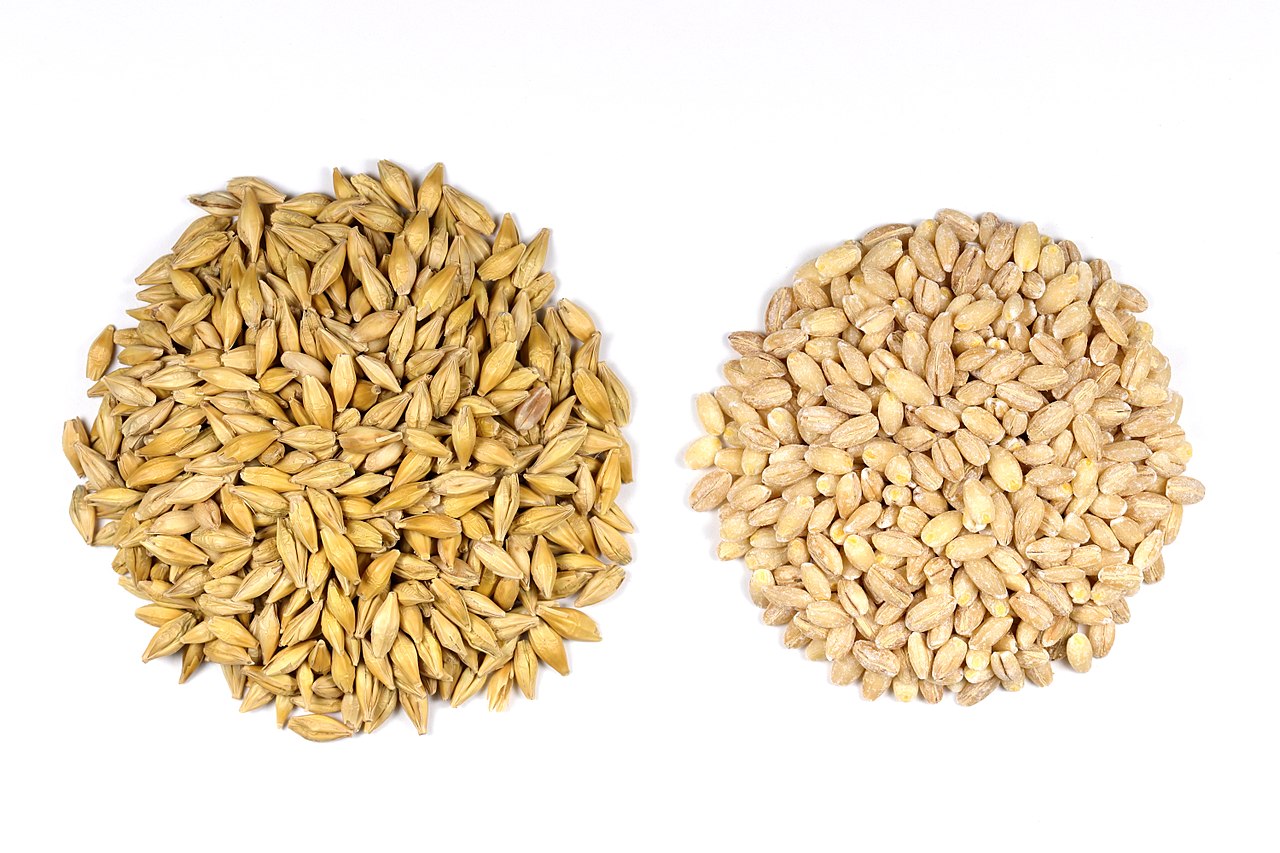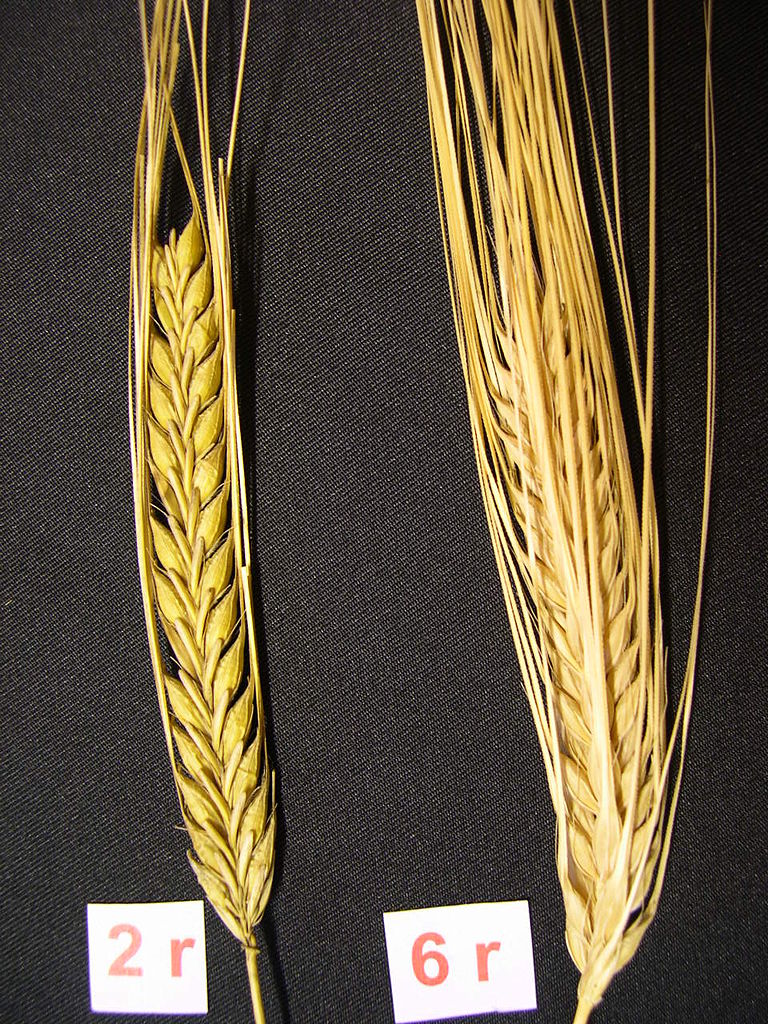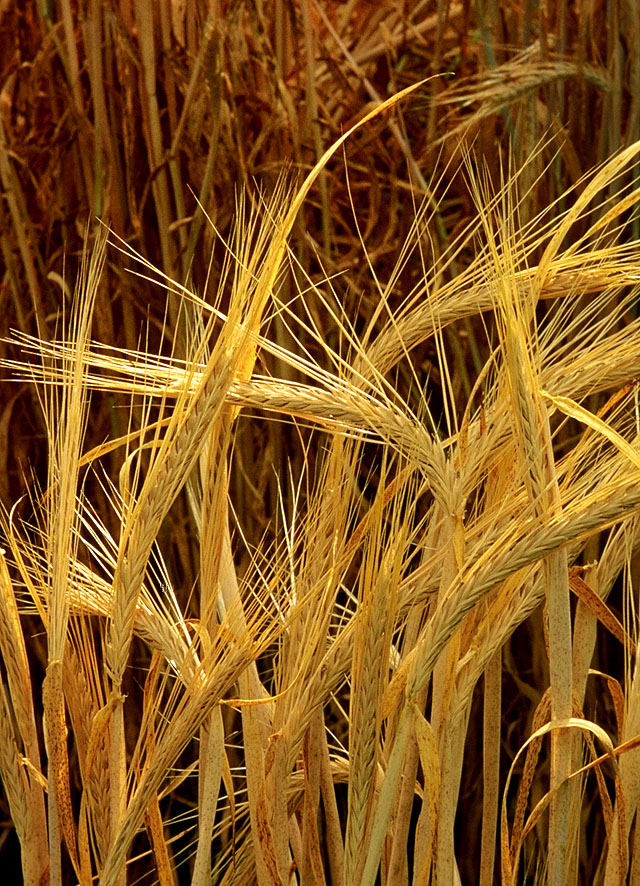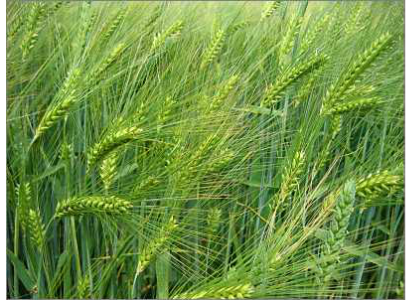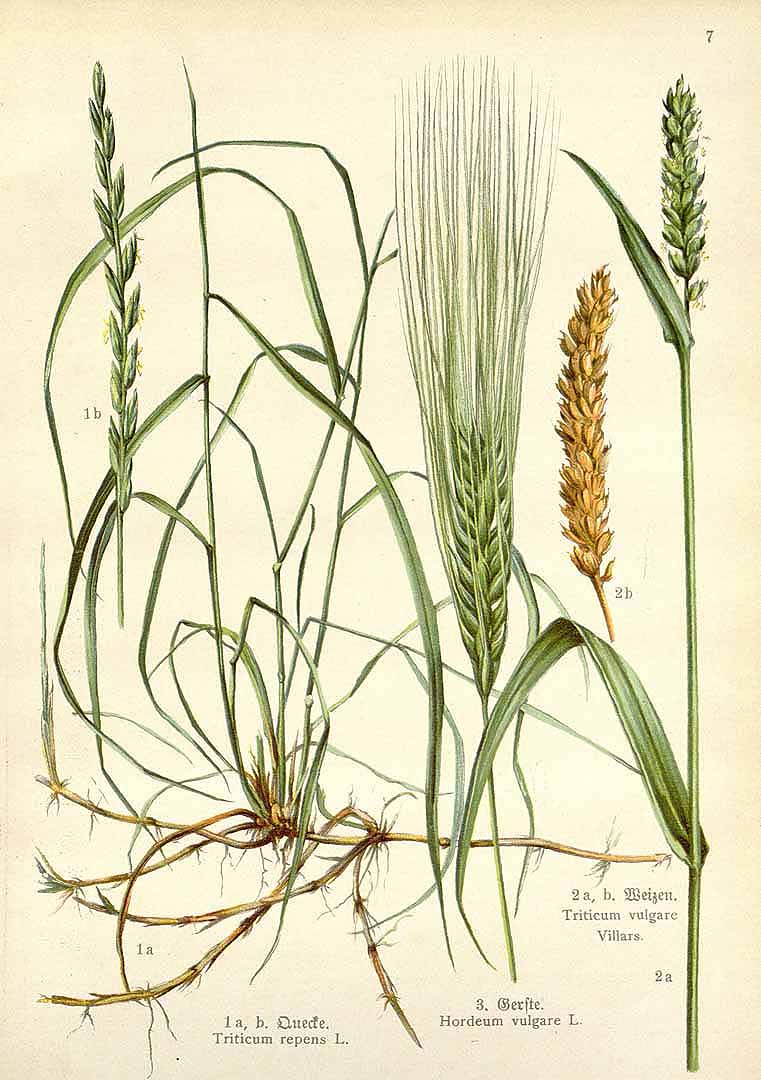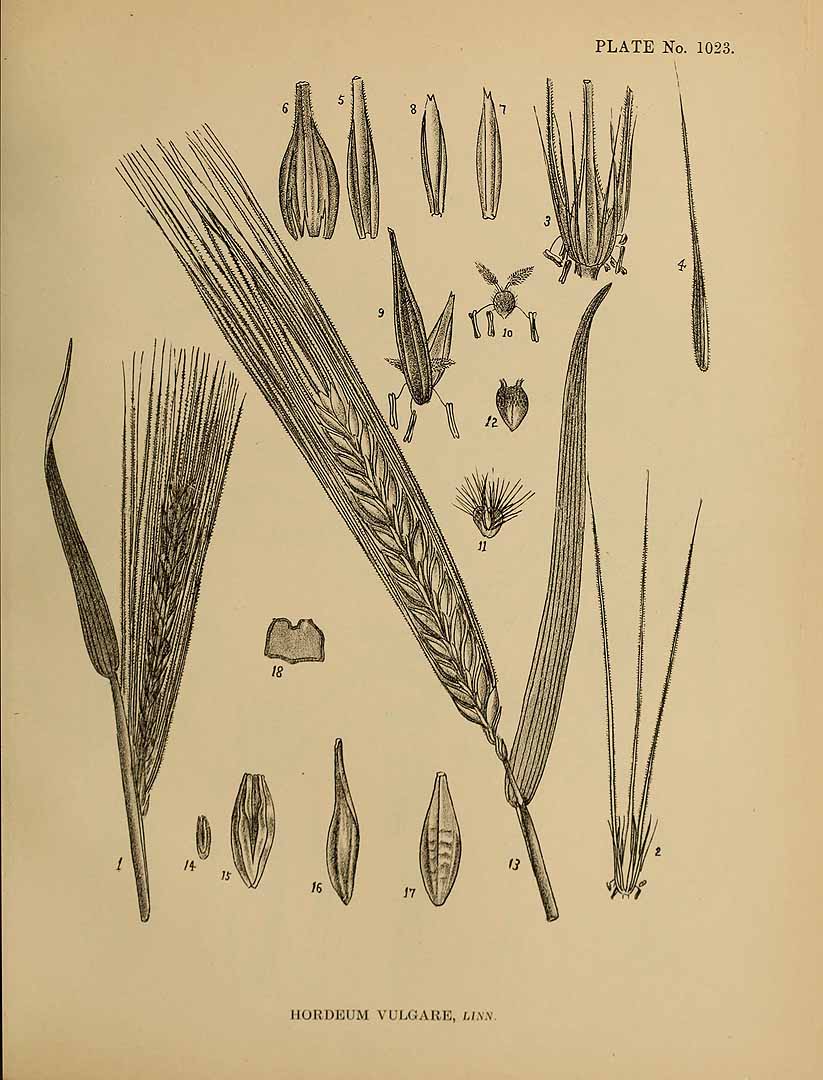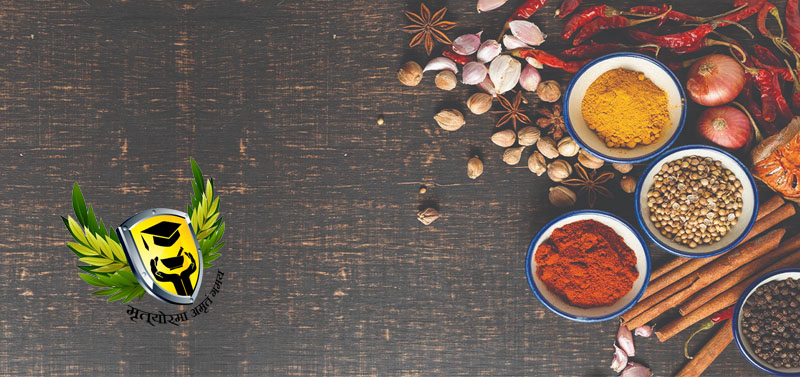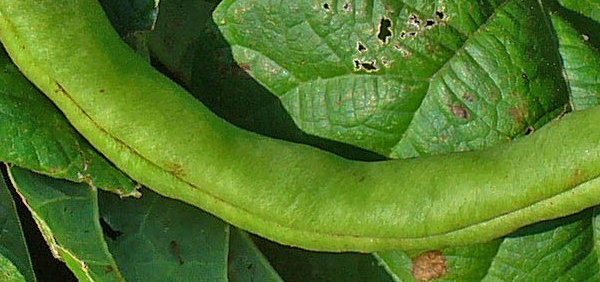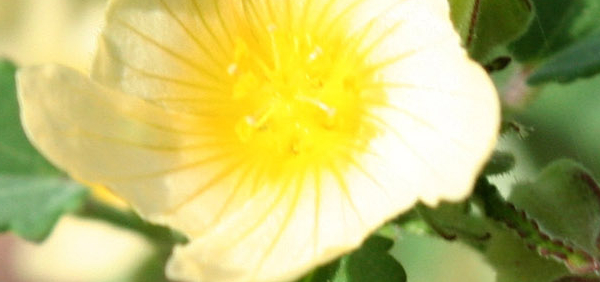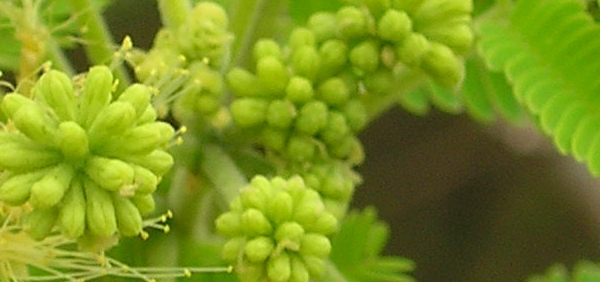Yava:
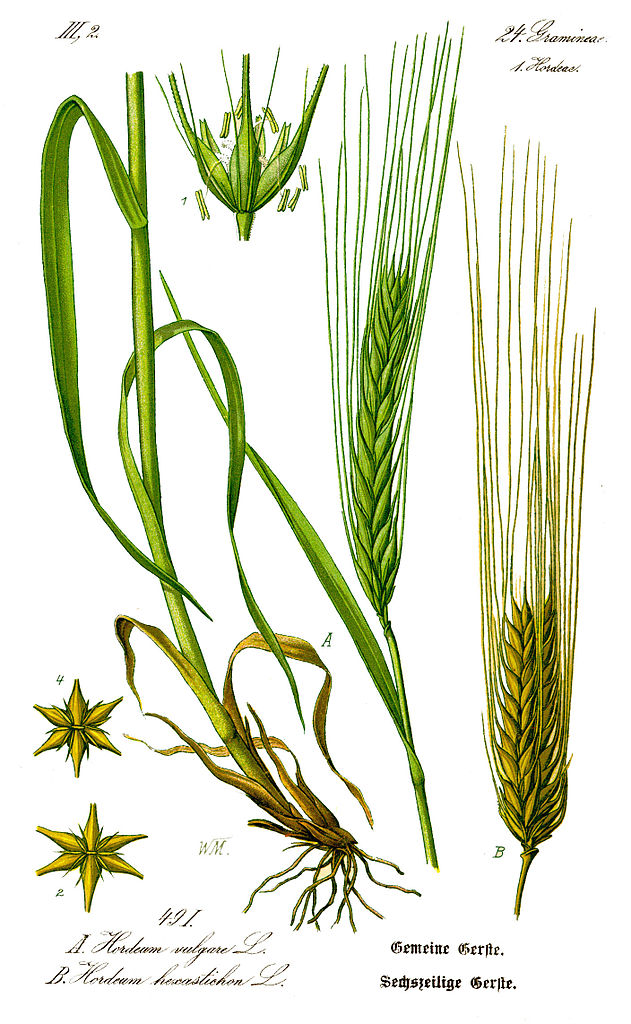 Barley (Hordeum vulgare), a member of the grass family, is a major cereal grain grown in temperate climates globally. It was one of the first cultivated grains, particularly in Eurasia as early as 10,000 years ago.Barley has been used as animal fodder, as a source of fermentable material for beer and certain distilled beverages, and as a component of various health foods. It is used in soups and stews, and in barley bread of various cultures. Barley grains are commonly made into malt in a traditional and ancient method of preparation.
Barley (Hordeum vulgare), a member of the grass family, is a major cereal grain grown in temperate climates globally. It was one of the first cultivated grains, particularly in Eurasia as early as 10,000 years ago.Barley has been used as animal fodder, as a source of fermentable material for beer and certain distilled beverages, and as a component of various health foods. It is used in soups and stews, and in barley bread of various cultures. Barley grains are commonly made into malt in a traditional and ancient method of preparation.HISTORICAL AND MYTHOLOGICAL REVIEW:
Barley was one of the first domesticated grains in the Fertile Crescent, an area of relatively abundant water in Western Asia, and near the Nile river of northeast Africa. The grain appeared in the same time as einkorn and emmer wheat. Wild barley (H. vulgare ssp. spontaneum) ranges from North Africa and Crete in the west, to Tibet in the east. According to some scholars, the earliest evidence of wild barley in an archaeological context comes from the Epipaleolithic at Ohalo II at the southern end of the Sea of Galilee. The remains were dated to about 8500 BCE. Other scholars have written that the earliest evidence comes from Jarmo in Kurdistan (present day Iraq).Taxonomical Classification
Kingdom: Plantae - Plants
Subkingdom: Streptophyta
Superdivision: Spermatophyta - Seed plants
Division: Magnoliophyta - Flowering plants
Class: Magnoliopsida - Dicotyledons
Family: Poaceae
Genus: Hordeolum
Species: Hordeum vulgare
Allied species:
It is used in a wide range in Indian system of medicine (Ayurveda) and described under Shukadhanya Varga. The cereal description is available since times of Vedas and Puranas (Upanishads, Shatapata brahmana), Atharvaveda, Agnipurana. The usage of Yava both as Pathya & Oushadha is established in ancient texts and modern research experiments.VERNACULAR NAMES
Sanskrit: aksata, akshata, dhanyaraja, divyaEnglish: Barley , Common barley, Cultivated barley, Hooded barley, Malting barley.
Hindi: जव jav, जौ jau
Urdu: jao, jav
Telugu: barlibiyam, dhanuabhedam
Bengali: বার্লি Bārli
Marathi: satu, jav
Konkani: Sovad
Oriya: Jav, Javadhana, Yava, Bansa
Gujarathi: Jau, Java, Jau
Tamil: barliarisi
Malayalam: barli, yavam
Kannada: jave-godhi
Punjabi: Jav, Jau
Sindhi: ڪٽيو
Arabic: شعير
Spanish: cebada, Cebada común, Cebada cultivada.
Assamese: যৱ
Japanese: オオムギ Ōmugi
Chinese: 大麦 Dàmài
French: orge
German: Gerste
Burma: mu yaw hcaparr
Nepal: बर्ली Barlī
Persian: جو
Sinhalese: බාර්ලි bārli
Tulu: bArli
Greek: κριθάρι krithári
Varities:
In traditional classifications of barley, these morphological differences have led to different forms of barley being classified as different species. Under these classifications, two-row barley with shattering spikes (wild barley) is classified as Hordeum spontaneum K. Koch. Two-row barley with nonshattering spikes is classified as H. distichum L., six-row barley with nonshattering spikes as H. vulgare L. (or H. hexastichum L.), and six-row with shattering spikes as H. agriocrithon Åberg.Definition
Yava in Veda and Purana- There is detailed description of Yava in veda, araṇyaka, ypanishaḍa, grihya sutra and shatapata brahmaṇa. It is considered as the most ancient cereal in Atharva Veda and also elaborated its feature as ‘dirgashuko dhanya vishesha’. Various purana enrols the yava in religious ceremony/ rituals, gramaranya (rural as well as wild), food material. It is used. There is a description of yava as diet as well as in some medicinal formulation and for care of plants; in the decaying of fruits, trees should be served with water mixed with various cereals, sesame seed and yava in agni puranaSynonyms
Synonyms in Ayurveda: aksata, akshata, dhanyaraja, divyaThe Old English word for barley was bære, which traces back to Proto-Indo-European and is cognate to the Latin word farina "flour". The direct ancestor of modern English "barley" in Old English was the derived adjective bærlic, meaning "of barley". The first citation of the form bærlic in the Oxford English Dictionary dates to around 966 CE, in the compound word bærlic-croft. The underived word bære survives in the north of Scotland as bere, and refers to a specific strain of six-row barley grown there. The word barn, which originally meant "barley-house", is also rooted in these words.
Rasa: Kashaya Madhura Tikta
Guna: Laghu Mrudu Picchila Ruksha
Veerya: Sheetha
Vipaka: Katu
Karma: Kaphahara Pittahara Vatahara
According to Ayurveda Yava and Madhu is the most Ancient diet (Pathya) in Prameha. The uses of the Yava and Madhu described for dietary and medicinal preparation for Prameha.
Cultivation:
Succeeds in most soils and in climates ranging from sub-arctic to sub-tropical. Easily grown in light soils Prefers a calcareous soil. Best grown in a sunny position.Barley first came under cultivation about 12,000 years ago[]. It is widely cultivated in Temperate areas of the world for its edible seed, there are many named varieties. It succeeds further north than most other cereal crops (it succeeds in Norway at latitude 70° N, and at higher altitudes (it is a staple crop in Tibet). The Coeleste group contains the hull-less barleys. Although lower yielding than the type, these hull-less seeds are much easier to harvest making them a much easier crop to grow on a small scale
Propogation:
Seed - sow in situ in early spring or early autumn and only just cover the seed. Make sure the soil surface does not dry out if the weather is dry. Germination takes place within 2 weeks.Harvesting:
The harvesting time depends on the total duration of crop in a tract. Harvesting in the plains of Jammu, Punjab, Haryana, Rajasthan and western Uttar Pradesh takes place from third week of March to middle of April. In Madhya Pradesh, southern and eastern Uttar Pradesh, Bihar, Orissa and West Bengal it starts 7 to 10 days earlier. In Maharashtra, Gujarat, Karnataka and Tamil Nadu (North Arcot , low hills ), it can be harvested by the first week of February. In the hills, where it is grown in rabi, the harvesting time varies from the end of April to end of May, depending upon the altitude. The spring sown crop is harvested from the end of April to end of July to the end of September. In the Nilgiri and Palni hills in southern India, the summer crop sown in May – June is harvested by end of August to first week of September – October. In the higher altitudes of Leh and Kargil in Jammu & Kashmir, a short duration crop planted in May can be harvested by end of August to first week of September. The harvesting is usually done by sickle, when ripe. Barley is more prone to shattering than wheat. Therefore, to prevent losses from shattering, it is useful to cut the crop in early hours of mornings. Harvest it before it is dead ripe. In the plains the threshing was done by treading the dry produce under the feet of cattle or by running the tractor over the heaps of harvested crop but now the use of the tractor operated threshers is common. The crop with large areas is also harvested with combine by the more progressive farmers. Special care is needed to ensure least skinning and breaking of barley grain during threshing by adjusting the speed of thresher. The average yield of rainfed crop ranges between 2,000 and 2,500 kg/ha, whereas that of irrigated crop is twice as much. Under favourable conditions of manuring and management practices, improved varieties are capable of giving grain yield of 5-6 tonnes / ha under irrigated timely sown conditions, from 3 to 3.5 tonnes / ha under late sown conditions and from 2.5 to 3 tonnes / ha under rainfed conditions.Phytochemistry:
Seeds- Cyanogenic glycoside characterized as 2- β-D- glucopyranasyloxy – methyl – (2R) – butyronitrile, ubiquinones,proanthocyanidins, glycosides of hordatines A & B, procyanidin B3, trimer of procyanidin C2, prodelphinidin, chrysoeriol, hordeumin, pangamic acid, protein, carbohydrates, calcium, phosphorus, iron.PHARMACOLOGY:
IMPORTANT FORMULATIONSParts used for medicinal purpose
Fruit, ,Dosage:
10-20 gmSubstitute:
Roasted barley was a good substitute for roasted maltAdultrants:
Dust, pebble, Stone, Straw,weed seeds,damaged grain,weevilled grain, insects, hair and excreta of rodentCommercial value:
It makes upto 12% of total cereal production and owns the fourth position after wheat, rice and maizeMorphology:
Histology:
Geographical distribution:
India: Assam, Madhya Pradesh, Meghalaya, Punjab; Asia, Europe, AmericaECOLOGICAL ASPECT:
Ranging from Boreal Moist to Rain through tropical Very Dry Forest Life Zones, barley is reported to tolerate annual precipitation of 1.9 to 17.6 dm (mean of 161 cases = 7.4), annual temperature of 4.3 to 27.5°C (mean of 161 cages = 12.1), and pH of 4.5 to 8.3 (mean of 138 cases = 6.5). Bukantis and Goodman note that barley has a wider ecological range than any other cereal grain. Barley has a shorter growing season than wheat or oats and can be grown at higher latitudes. Some varieties are grown in tropical India, in hot districts of Africa, and as far north as 70deg.N in Norway. In the United States it is grown in the cooler climates. Among the cvs, there are adaptations to almost any ecological situation, but most do not thrive in the humid tropics. Some forms survive under extreme conditions and mature in 60–70 days. Due to its ability to ripen at rather high temperatures, the southern limit for its cultivation is 10°N of Equator. Barley is not particularly winter-hardy, so is grown as a spring crop. In areas with comparative mild winters as the Mediterranean and India, it is grown as a winter crop. Average temperature during growing period is 15.5–17°C, preferably sunny and moderately rainy. Grown on soils which are too light or otherwise unsuitable for wheat cultivation; does well on light or sandy loam soil. Highest grades of barley are grown on fertile deep loam soils with pH of 7–8. Soils lower than pH 6 may induce aluminum toxicity. For malting barleys, soils should not contain too much nitrogen.Plant conservation:
There are no known environmental concerns associated with barleyGeneral Use:
Therapeutic Uses:
Kasa, Pinasa, Svasa, UrusthambhaSystemic Use:
Administration:
The seeds are astringent, demulcent, refrigerant, emollient, and diuretic, intellect promoting, aphrodisiac, digestive and tonic. They are useful in catarrhs of throat and urinary tract, cough, asthma, strangury, amentia, fever, burning sensation, urocystitis, dyspepsia, vomiting, gastric disorders, abdominal pain, erysipelas, leprosy, obesity, filaria, defects of vision, ulcers, burns, cephalalgia, anemia and used in the diet of invalidsPharmacological:
Lekhana(scraping effect), Medohara(eliminates excess fat accumulated in the body), Vrishya (acts as an aphrodisiac), Balya, Sthairyakaraka(improves strength), Varnya(increases complexion), Swarya(helps to gain good voice), Agni/Agnideepana(increases appetite and metabolism), Kasa-Shwasa Pinasahara(remedy for cough, breathlessness and rhinitis), Kantarogahara(eliminates throat infections), Trishnahara(indicated in dehydration), Twakrogahara(eliminates skin infections, diseases), Vrane Pathyam(a therapeutic diet wounds), Urustambhahara(relieves stiffness over thigh regions), Pramehagna(Controls and prevents Diabetes Mellitus)Clinical trials:
- Kumari Rajesh, Kotecha Mita. Physicochemical and nutritional evaluation of Yava (Hordeum vulgare Linn.). Int. Res. J. Pharm. 2015; 6(1):70-72 http://dx.doi.org/ 10.7897/2230-8407.06116
- Ben-erik-van-wyk; Food Plants of the World, Briza publications, South Africa, 1st edition, 2005, 80
- Sen Sharma. P ; Plants In The Indian Puranas- An Ethnobotanical Investigation, Naya Prokah, Bidhan Sarani, Calcutta; 1980, 206
- Singh R, Kushwaha Rajeev, Kotecha Mita, Yava (hordeum vulgare linn.) in ayurvedic literature and its dietaic approach (pathya) in different disorders, Journal of Ayurveda, 2011,Volume 2, 68-74
Research:
- YAVA (HORDEUM VULGARE LINN.): A REVIEW Kumari Rajesh 1*, Singh Manju 2, Kotecha Mita 3 1Assistant Professor, Shiv Shakti Ayurvedic College, Bhikhi (Mansa), India 2Women Scientist, Department of Biochemical Engineering and Biotechnology, IIT Delhi, Hauz Khas, New Delhi, India 3Professor, H
Precautions:
Toxicity studies:
Barley is LIKELY SAFE for most people when taken by mouth appropriately. Barley flour can sometimes cause asthmaUse in other system of medicine:
- Afghanistan: Flowers are taken orally by females for contraception
- Argentina: Decoction of the dried fruit is taken orally for diarrhea and to treat respiratory and urinary tract infections12. China: Decoction of the dried fruit is taken orally for diabetes.
- Egypt: The fruit is used intravaginally as a contraceptive before and after coitus. Fifty-three percent of 1200 puerperal women interviewed practiced this method, of whom 47% depended on indigenous method and/or prolonged lactation
- Iran: Flour is used as a food. A decoction of the dried seed is used externally as an emollient and applied on hemorrhoids and infected ulcers. A decoction of the dried seed is taken orally as a diuretic and antipyretic and used for hepatitis, diarrhea, scorbutism, nephritis, bladder inflammation, gout, enema, and its tonic effect. Decoction of the dried seed is applied to the nose to reduce internasal inflammation
- Italy: Compresses of boiled seeds are used to soothe rheumatic and joint pains16. Infusion of the dried seed is used as a galactogogue
- Korea: Hot water extract of the dried entire plant is taken orally for beriberi, coughs, influenza, measles, syphilis, nephritis, jaundice, dysentery, and ancylostomiasis; for thrush in infants; and as a diuretic. Extract of the dried entire plant is used externally for prickly heat.
- United States: Infusion of the dried seed is taken orally for dysentery, diarrhea, and colic and for digestive and gastrointestinal disorders
- Folk uses in India: Traditionally, the sattu is used in the form of gruel in painful and atonic dyspepsia in various parts of the country. A malt extract is prepared by boiling 30-120 g of its germinated grain sin 500 g water and then strained to form a decoction. When hops are added, the decoction becomes wort and acquires tonic properties, which have been found valuable in cases of debility following on long continued chronic suppuration. Besides, tribal people of Sonbhadra district in Uttar Pradesh, prepare a decoction of its 2 grains along with the stem bark of Holarrhena antidysentrica Wall. and black pepper. About 2 teaspoonsful of this decoction are given to the patient twice a day for seven days to cure malarial fever
CONCLUSION:
Barley is annual, erect medicinal herb. Its whole plant is used in Ayurvedic system of medicine for treatment of diseases. It is known as Yavah in Sanskrit. Its seeds are also eaten as cereal. The seeds of barley plant are cooked as whole grain or grinded and used as flour. It is used to make dalia or porridge. Since the gluten content of barley is low, so it cannot be used to make bread. But it can be mixed with wheat flour to make mix atta. Barley seeds can be enjoyed as sprouts.Ayurvedic Formulations:
Common Ayurvedic Formulations of Yava with their IndicationsAgasthya Rasayanam - Agasthya Rasayana for asthma
Photos of Yava -
Hordeum vulgare
- Courtesy: https://en.m.wikipedia.org/wiki/Barley#/media/File%3ABarley_(Hordeum_vulgare)_-_United_States_National_Arboretum_-_24_May_2009.jpg
- Courtesy: https://en.m.wikipedia.org/wiki/Barley#/media/File%3ABarley_Seeds.jpg
- Courtesy: https://en.m.wikipedia.org/wiki/Barley#/media/File%3ABarleyEars.JPG
- Courtesy: https://en.m.wikipedia.org/wiki/Barley#/media/File%3AHordeum-barley.jpg
- Courtesy: http://theworldwidevegetables.weebly.com/hordeum-vulgare---barley.html
- Courtesy: http://plantillustrations.org/illustration.php?id_illustration=146735&SID=0&mobile=0&code_category_taxon=9&size=1
- Courtesy: http://plantillustrations.org/illustration.php?id_illustration=162718&SID=0&mobile=0&code_category_taxon=9&size=1
KEY WORDS: Yava Hordeum vulgare
- » Classification and names of Yava
- » Synonyms and definitions of Yava
- » Drug Properties of Yava
- » Chemical Constituents of Yava
- » Standardization of Yava
- » Parts used and Dosage of Yava
- » Morphology and Histology of Yava
- » Distribution and Conservation of Yava
- » Cultivation of Yava
- » Yava in the market
- » Medicinal Uses of Yava
- » Researches and clinical trails of Yava
- » Yavain other sytems of medicine
- » Ayurvedic formulations with Yava
- » Images of Yava

Kotakkal Ayurveda - Mother land of modern ayurveda

